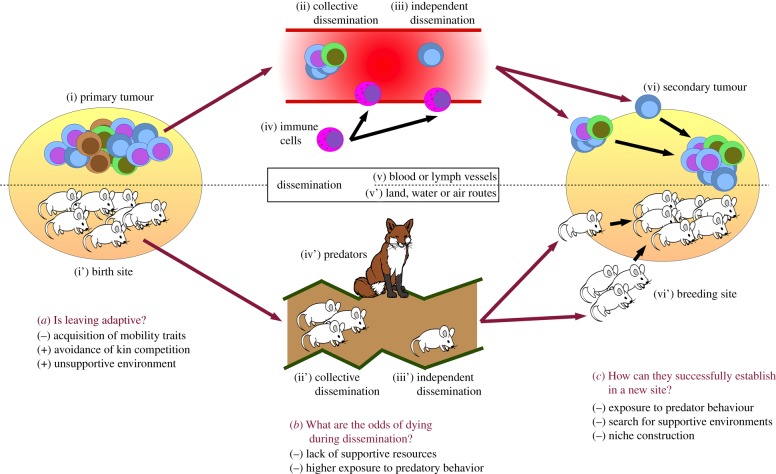Figure 1.
The pros and cons of (cancer cell) dispersal. Dispersing individuals/cells have to leave (i) the primary tumour (respectively their birth sites) to disseminate (ii) collectively or (iii) independently. They may be exposed to (iv) predatory behaviour (from predators or immune cells) when joining (v) the lymph or blood flow (respectively land, water or air routes), before finally arriving to (vi) secondary tumours (respectively breeding sites). During all these steps, they are being exposed to beneficial or detrimental factors, which may or may not tip the balance towards dispersal. (Online version in colour.)

